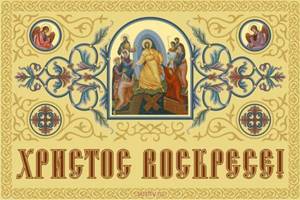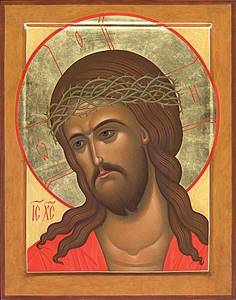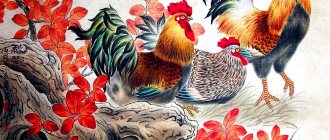Lent in 2013: dates, calendar, what you can eat, daily menu, tips and recipes
Kaleidoscope
17 March 2013, 14:23 | Author: Ivan Rutov
photo:
Lent begins on March 18th. Topnews has prepared useful information for everyone: how long Lent lasts, traditions, nutrition, the essence of fasting.
Great Lent 2013 in Russia: beginning, dates, when it ends, essence
Lent 2013 in Russia begins on Monday, March 18 and lasts until May 5, when the Easter holiday is celebrated. Great Lent consists of Lent (the first 40 days) and Holy Week, which ends the fast. During fasting, it is customary to clear one’s thoughts from worldly vanity and devote oneself to spiritual reflection. In addition to the fact that you need to follow a certain diet, you must observe asceticism: limit yourself in entertainment. Restrictions in Orthodoxy mean a lot. The fewer temptations a person has, the more time and energy he has to think about the eternal, about his soul and about the path to God. Lent 2013 will also allow you to improve your health and get rid of excess weight.
Lent calendar
The first week is called “Fedorov’s Week.” These days it is customary to remember all the defenders of the Orthodox faith. In the second week, the memory of St. Gregory Palamas is venerated. The third week is the Worship of the Cross, and during the fourth week the theologian John Climacus is remembered. In the fifth week, the memory of the Venerable Mary of Egypt, patroness of repentant women, is venerated. The sixth week is marked by Palm Sunday - the day of the Lord's entry into Jerusalem. Next begins Holy Week - the strictest week of Lent before Easter. In the last week, you need to strictly adhere to fasting, take communion and repent. And finally, on May 5, the Holy Resurrection of Christ is celebrated - Easter.
Lent 2013, what you can eat
There can be no question of any unauthorized fasting according to the regulations or even close to the regulations if there are diseases associated with the stomach or metabolism. In modern conditions, even monasteries rarely fast with dry eating. If you have never fasted, first of all you should first talk to your priest: he will give you individual recommendations. If you have any serious illnesses, then you should not observe Lent in all its severity.
For everyone else who intends to adhere to strict food restrictions, you should remember that you cannot eat during Lent 2013. Throughout Lent, it is forbidden to eat all products of animal origin: meat, sausages, fish, seafood, white bread, pastries, candies, mayonnaise, eggs, milk and dairy products (sour cream, cottage cheese, feta cheese, ayran, matsoni, kefir, cheese, yogurt and butter), as well as strong alcohol. Allowed to eat during Lent : fruits, vegetables, dried fruits, sauerkraut, salted and pickled vegetables, mushrooms, nuts, cereals, legumes, water porridge, jelly, tea, dried fruit compotes, kvass.
Meals, menu by day during Lent
During Lent it is customary to eat in the following order:
On Monday, Wednesday and Friday - dry food, that is, food without oil (water, bread, boiled vegetables, fruits, compote). We eat cold food, once a day. On Tuesday and Thursday - hot food without oil (vegetables, cereals, mushrooms); once a day hot food, without oil. On Saturday and Sunday, you are allowed to add vegetable oil and a little grape wine to your diet. We eat food with butter 2 times a day (except for Holy Week). On Clean Monday, the first day of Lent, this year - March 18, it is customary to completely refuse food. From the second to the fifth day of Lent, i.e. from Tuesday to Friday) - strict fasting, only bread and water. On Annunciation, April 7, and Palm Sunday, April 28, you can eat fish, wine, and vegetable oil. On Lazarus Saturday, April 27, you can eat fish caviar, but you can’t eat fish.
Great Monday, Tuesday, Wednesday - you cannot eat cooked food. Maundy Thursday - you can have wine, vegetable oil. On Good Friday of Holy Week, May 3, as well as on Clean Monday, you must completely abstain from food. You are only allowed to drink water. On Holy Saturday, May 4, it is also advisable to refuse food or eat very modestly.
Recipes for Lent 2013
One of the difficulties of celebrating Lent is that in our time the traditions of Lenten cooking have been lost. But if you prepare delicious Lenten dishes for your family, perhaps they will begin to fast, seeing that it is not as scary as they previously thought. Recipes for lean dishes are easy to find on the Internet today, but basic advice can be given now.
Porridge
If you regularly cooked porridge for your family, then you can cook it during Lent, just not with milk, but with water, and do not season it with oil, but serve it with sauce, or sweet: based on jam or jelly, berries, steamed and chopped dried fruits, nuts, honey, cocoa, vegetable corn cream, or unsweetened: vegetable, mushroom; in both cases the variations using spices are very interesting. Don’t forget about the variety of the main component - cereals: rice, buckwheat, pearl barley, oatmeal, semolina... whole, crushed, flakes. Play with the consistency of the porridge: from a spread close to puree soup to crumbly “grain to grain”. Additional components can not only be served as a sauce, but also added during the preparation of porridge.
Soups
It’s great if soups are common in your family diet. Most of them have very nice Lenten options or are easy to adapt to Lent. The main point of the technology of lean soup: timely laying of the components, so that by the end of cooking they are all ready at the same time, first harder, then more tender, for example, for borscht, beets and carrots are laid before potatoes and cabbage. Lightly frying the vegetables pleasantly improves the taste of the soup. Most lean vegetable soups gain better flavor and aroma when a clove of chopped garlic is added at the very end. Don't forget about other spices, herbs, and bay leaves.
You can also use ready-made mixtures or cubes for broth, you just have to monitor their composition: whether non-lenten components have been added. It is also possible to prepare vegetables separately, grind all or part of the components into a puree soup, serve with croutons or crackers, or even, in the Oriental style, with unleavened rice (here it makes sense to cook soup with a very pronounced taste, spicy or salty).
News Media2
Follow the events of the day in our public account on Telegram
Lent begins - a time to be grateful for
Think about the soul. Maslenitsa fun week ends in a couple of hours. Lent begins at night. Recently, the number of those who refuse meat, milk and eggs for seven weeks has increased. As does the number of restaurants offering a Lenten menu. But initially the essence of Lent is not gastronomic abstinence, the main thing is “not to eat people.” That is, do not do evil. Regardless of whether you believe it or not.
Lent in a consumer society. Seven weeks of voluntary abstinence in an environment where any restraint is in itself a terrible sin; where supply has long exceeded irrepressible demand; and yet every year the number of people who voluntarily limit themselves is constantly growing.
“I understand that I need periods when I have to remember that I am in control of myself. A moment of self-control is important. That is, to improve oneself, to serve someone. The feeling that you are serving someone greatly ennobles your actions and makes them logical. This feeling is understandable to very military people, real military men who are essentially loyal. This feeling is very clear to believers who came to Church not to ask, but to give thanks,” says actor and film director Ivan Okhlobystin.
The religious tradition is that every fast is a milestone on the path to God. Taking the first step, the fasting person finds himself, as it were, on a ladder leading upward from post to post. And with every step he should become better. If this does not happen, then fasting becomes an annoying diet. Giving up meat and milk is not an end in itself, it’s just a way to learn not to eat people...
“I once had a leadership that was very fasting, they all fasted terribly. When we went to lunch together, we asked for cucumbers and tomatoes, and asked not to drip with vegetable oil, which is generally allowed everywhere. And then we came to the meeting and raked so much that... Basically, you think: “If only you had eaten your sausage in the morning, why are you trashing people like that?”, shares journalist Olga Lyubimova.
Of course, both Lent itself and its specific rules are inextricably linked with the natural habitat, and, if desired, are quite understandable from a rational point of view. However, these rules, traditions and symbols appeared at a time when the Church was as integral a component of the environment as the climate or the harvest.
In modern life, religion is separated from real everyday life almost in the same way as the church is from the state. At the same time, society, while laying claim to some originality, not only preserves, but actively cultivates the most picturesque customs of the past. Lent, among other things, risks being embedded in such a system of symbols, devoid of original meaning.
“Lord, Lord of my life... grant me to see my sins and not condemn my brother.” This is essentially the meaning of Lent, and it’s not at all about the amount of meat, fish, milk that you ate or didn’t eat,” emphasizes the art critic, professor, rector of the theater school. Shchepkina Boris Lyubimov.
The very history of ideas about sin begins with food. Adam, succumbing to the temptation of the devil, ate an apple and thereby broke his fast. Faced with the dilemma of “life or survival,” he, and with him all of us, chose the second. And thus doomed themselves to death. From this moment on, food becomes a necessary condition of our life. Fasting is a conscious answer to the question of what it means to be alive, what life means in general. Ideally, this is proof that our dependence on material things is not final and not absolute.
“Of course, this is the moment of choice that stands before us, as - “nation” I don’t really like the word - as before the people, the people of God, when the new generation no longer understands what they fought for, built, it’s already difficult to explain, because that there is a society of temptation around. A consumer society is a society of temptation, and it is impossible to consume everything. Therefore, I think that society will return to its roots and find meaning in a society of daily heroism,” says Church historian Alexey Svetozarsky.
Very freely interpreting Christ’s phrase that man does not live by bread alone, our civilization has incredibly expanded the list of things supposedly necessary for a person to live. Today it even includes lobsters and lobsters on Lenten restaurant menus.
The word “crisis,” which in recent years has become defining for our consumer society, is translated from Greek as “judgment.” Perhaps the meaning of a conscious transition from a life based on what one wants to a life based on what is really necessary, inherent in Lent, is a way of saving not only each individual person...
When is Easter 2013 - 2020

Calendar of “moving” Orthodox holidays for 2009-2019. (dates are given according to the new style) Sunday - the last day of Maslenitsa week
| Year | Beginning of Triodion | Forgiveness Sunday | Entrance to Jerusalem | EASTER | Ascension of the Lord | Day of the Holy Trinity | Petrov POST |
| 2010 | January 24 | The 14th of February | March 28 | April, 4 | may 13 | May, 23rd | 42 days |
| 2011 | February 13 | March, 6 | April 17 | April 24 | 2 June | 12 June | 22 days |
| 2012 | February 5th | February 26 | April 8 | April 15 | May 24 | June 3 | 31 days |
| 2013 | 24 February | March 17 | April 28 | 5 May | June 13 | June 23 | 11 days |
| 2014 | February 9th | 2nd of March | April 13 | 20 April | May 29 | June 8 | 26 days |
| 2015 | 1st of February | February 22 | 5th of April | 12th of April | May 21st | May 31 | 34 days |
| 2016 | February 21 | March 13 | April 24 | 1st of May | the 9th of June | June 19 | 15 days |
| 2017 | February 5th | February 26 | April 9 | April 16 | May 25 | June 4 | 30 days |
| 2018 | 28 January | 18th of Febuary | April 1 | April 8 | May 17 | May 27 | 38 days |
| 2019 | February 17 | 10th of March | April 21 | April 28 | June 6 | June 16 | 18 days |
When does Maslenitsa begin? Determining the start date of Easter and Maslenitsa in any year. Church Maslenitsa begins 8 weeks before Easter and lasts 1 week from Monday to Sunday (Forgiveness Sunday).
National Maslenitsa begins a day earlier - on Sunday for the so-called “meat ritual”, when Orthodox Christians are allowed to eat meat for the last time (i.e. it lasts 8 days).
In 2013, Maslenitsa will be held from Monday March 11 to Sunday March 17
After Maslenitsa, 7 weeks of Lent begin, lasting until Easter Sunday (or rather, Lent lasts 7 weeks without one day, from Clean Monday to the pre-Easter Saturday inclusive, until the first evening star).
According to the definition of the First Ecumenical Council, Easter is always and everywhere celebrated between March 22 and April 25 according to the old style (between April 4 and May 8 according to the New Style) - on the first Sunday after the Paschal full moon (the first full moon after the spring equinox), or for a week later, so that the Christian Easter would be celebrated after the Jewish one (but not coincide with the Jewish one).
Easter Day in any year (the date will be obtained according to the new style) can be determined by the formula: (4 + c + d) April or, if the sum is more than 30, then [(4 + c + d) - 30] May. Calculating the number c for the formula To get the number c, you need to divide the number of the year with a remainder by 19, then multiply the resulting remainder of the division by 19, add 15 and divide the resulting amount with a remainder of 30. The number c will be equal to the remainder of this division. Calculation of the number d for the formula Number d is equal to the remainder of dividing the number (2a + 4b + 6c + 6) by the number 7, where: a is equal to the remainder of dividing the number of the year by 4; b - equal to the remainder of dividing the number of the year by 7; c - calculated earlier.
To determine the start date of Maslenitsa, all that remains is to count from Easter eight weeks ago - until the Monday of the beginning of the Church Maslenitsa or until Sunday (the "meat plot") of the beginning of the People's Maslenitsa.
Summer and winter solstices and spring and autumn equinoxes
| Dates and times of solstices and equinoxes in UTS time (see below) | ||||||||
| Year | The vernal equinox | Summer solstice | Autumn equinox | Winter solstice | ||||
| March | June | September | December | |||||
| 2009 | 20 | 11:44 | 21 | 5:45 | 22 | 21:18 | 21 | 17:47 |
| 2010 | 20 | 17:32 | 21 | 11:28 | 23 | 3:09 | 21 | 23:38 |
| 2011 | 20 | 23:21 | 21 | 17:16 | 23 | 9:04 | 22 | 5:30 |
| 2012 | 20 | 5:14 | 20 | 23:09 | 22 | 14:49 | 21 | 11:12 |
| 2013 | 20 | 11:02 | 21 | 5:04 | 22 | 20:44 | 21 | 17:11 |
| 2014 | 20 | 16:57 | 21 | 10:51 | 23 | 2:29 | 21 | 23:03 |
| 2015 | 20 | 22:45 | 21 | 16:38 | 23 | 8:20 | 22 | 4:48 |
| 2016 | 20 | 4:30 | 20 | 22:34 | 22 | 14:21 | 21 | 10:44 |
| 2017 | 20 | 10:28 | 21 | 4:24 | 22 | 20:02 | 21 | 16:28 |
EXPLANATION about UTC UTC - Universal Coordinated Time (UTC), Universal Time, also Universal Coordinated Time - the basis of civil time, differing by an integer number of seconds from atomic time and by a fractional number of seconds from UT1. UTC was introduced to replace Greenwich Mean Time (GMT), and is sometimes also erroneously referred to as GMT. The new UTC time scale was introduced because the GMT scale is an uneven scale and is related to the daily rotation of the Earth. The UTC scale is based on the uniform atomic time scale TAI and is more convenient for civilian use. Time zones around the globe are expressed as positive and negative offsets from UTC. It should be remembered that UTC time is not converted in winter and summer. Therefore, for those places where there is a change to daylight saving time, the offset relative to UTC changes. In Russia and Europe, there is a transition to summer time, which is carried out on the last Sunday in March at 2:00 by moving the clock hands 1 hour forward, and the reverse transition is carried out on the last Sunday in October at 3:00 by moving the hands back 1 hour. UTC correction for Moscow - in winter + 3 hours, in summer + 4 hours. If in winter it is 20:20 in Moscow, then UTC = 17:20, and from March to October = 16:20. Thus, the date of the solstice or equinox in Moscow time may shift to the next date relative to UTC. For example, if the UTC time is 23:00 on June 22, then in Moscow it is already 03:00 on June 23.
LiveJournal
December 16, 2018adm
Related Posts
- An unearthly beauty, comet Panstarrs flies through the solar system March 16, 2013
- When is Easter 2013. Orthodox Easter. Bright Sunday of Christ. February 16, 2013
- Mysteries of the Sun, Solar Wind and...June 4, 2012
Popular Posts
- An unearthly beauty, comet Panstarrs flies through the solar system March 16, 2013
- December 21 - 22: the shortest day of the year December 21, 2010
- Summer and winter solstices and spring and autumn equinox. September 20, 2011
Lent has begun in Russia

Savior in the crown of thorns. Photo: Icon painting workshop of the Holy Trinity Church in Kursk
What is the point of this post? Let's start with the fact that fasting is not a diet when a person watches what he eats in order to bring his body into the appropriate shape. Moreover, fasting is not an ascetic exercise that develops our attentiveness to what is happening in us, training our willpower: will I be able to subordinate the desires of my body to myself, or will they still dominate me, determine what and how do I live? Who is the master within me: the various desires of my flesh, or my mind and spirit? Yes, the restoration of the correct hierarchy, when it is not our “I want, and that’s all” that drags us along, but our consciousness, mind and spirit that determine how we live - this is important. But even such self-education, self-development is not fasting, but just a technique for self-improvement.
Fasting becomes fasting, and nothing else, when all our efforts, all our exploits - big and small, are subordinated to one goal. Which? Why is all this being done? For the sake of improving my body? Development of my will? Enriching my mind? Strengthening my spirit? No. Nothing that belongs to me, that is described by the definitions “mine, mine, mine,” can become the purpose of fasting. We do not accept fasting for our own sake! We fast for Christ's sake. Not for the sake of our body, which is so dear to us, but nevertheless perishable. Not for the sake of strengthening our will today, which is so decisive, but still easily gives in to difficulties. Not for the sake of our limited and fickle minds. Or our so often restless spirit. No, all the feats of fasting are not for our own sake, they are for the sake of Christ. He is our goal.
Orthodox calendar with Maria Gorodova
Once upon a time, two thousand years ago, He, sinless and immortal by His divine nature, voluntarily and out of love for us, people, made a way to meet us. Having walked the road to Golgotha, gone through the Suffering of the Cross, Crucifixion, Death. Today is our turn to make our sacrifice to Him, to begin our journey towards Christ. Yes, it is extremely difficult. Even if we give up little things - only some food product from our usual diet, or entertainment that usually pleases us, limiting ourselves not to the extent, that’s all, then it’s impossible to live, then death, but only reaching the border beyond which we begin to feel discomfort, to feel inconvenience.
Let's be honest, even such sacrifices are difficult for us. And they may not be able to do it. Therefore, fasting is impossible without the effective help of the Grace of Christ - without prayers, without participation in the Sacraments of Confession and Communion, without the strengthening power of Anointing, without works of mercy that turn us, ordinary people, into co-workers with God.
That is, fasting, this feat of love, we cannot accomplish only on our own. Therefore, embarking on this long, seven-week journey towards the Risen Savior, we pray: “Lord of hosts, be with us...”, “Direct my steps according to Thy word...”.
Kilt
- a piece of men's clothing, an integral part of the national costume of Scotland. The kilt appeared in Scotland around the 15th century as the main part of the clothing of the Highlanders.
There are large and small kilts.
Today they usually wear a small kilt
, which by its design is a pleated skirt. When wearing a kilt, the folds are located at the back and sides, and at the front the smooth parts (without folds) form aprons (“apron” literally means “apron”), overlapping each other. The end ends of the aprons are also processed to form folds.
To make a kilt, a strip of woolen fabric with a traditional Scottish pattern - tartan (in Russia, fabric with such a pattern is called tartan) is used. The folds of the kilt must unmistakably match the pattern of cells on the fabric.
The kilt is attached to the body using a belt or straps with buckles. Traditionally, the kilt is worn with a special sporran handbag. The front wrap is secured with a large decorative pin - kilt pin
.
Today, most Scots wear the kilt as part of formal or wedding attire, while very few people wear it every day. Scouts wear kilts for parades, and in many places in Scotland kilts can be seen during Highland sporting events or at both music and dance performances. In the British Army, as well as in the armies of other British Commonwealth countries, the kilt is still part of the military uniform, although it has not been used in combat since the Second World War.
The small kilt served as a model for various options for women's skirts
-
kilt
, folded. They are usually sewn from tartan fabric, with folds on the back and sides, a wrap on the front, and the edge of the fabric often ends in fringe.
Until the beginning of the 17th century. wore a large kilt
.
A large kilt, or tartan, is worn as a cape made of a large piece of woolen fabric, draped and gathered at the waist with a belt. The lower part of the cape forms something like a skirt, and the upper part could be thrown over the left shoulder and secured with a pin; or was attached to a belt, partially falling from it.
Sources and additional information
- "Kilt - clothing for Scottish warriors..."
The article answers the questions:
- “Well, a very big kilt!”
The article talks about the origins of the large kilt and answers the questions:
- "The Great Kilt and How to Put It On"
The page shows with the help of photographs the entire difficult process of putting on a large kilt.
- "The kilt is worn on the naked body"
Material is presented about the clans and the traditional highlander costume, photographs with examples of wearing a kilt, and a photo gallery.
Additionally on Genon.ru:
- Where can I read Scottish and Irish fairy tales?
- How to correctly write Scottish surnames and names starting with Mc (Mac) in Russian?
Lent of Peter and Paul in 2013
Peter's Fast (also called the Apostolic Fast) is an Orthodox fast with which Christians honor the memory of the holy apostles Peter and Paul. The duration of this fast is not fixed and depends on when Easter was in the current year. Lent begins on Monday, one week after Trinity Day (which is determined by counting 49 days after Easter) and ends on the day of Peter and Paul (July 12).
The Apostolic Fast was established in memory of how the apostles Peter and Paul fasted in preparation for the worldwide preaching of the Gospel. This fast is intended to cleanse the soul and body after the rather long holiday of Pentecost. Its main goal is spiritual preparation for the celebration in the name of the two supreme apostles.
This fast is not considered too strict; on all days except Wednesday and Friday, fasting people can eat fish. On Saturdays and Sundays, it is allowed to eat boiled food with vegetable oil and fish. On Mondays, Wednesdays and Fridays, dry eating is practiced, that is, eating only raw, uncooked foods (most often bread, water, salt and raw vegetables).
The Feast of Peter and Paul itself is not a fast day if it falls on Saturday or Sunday. If it falls on a weekday, he is included in the fast.









